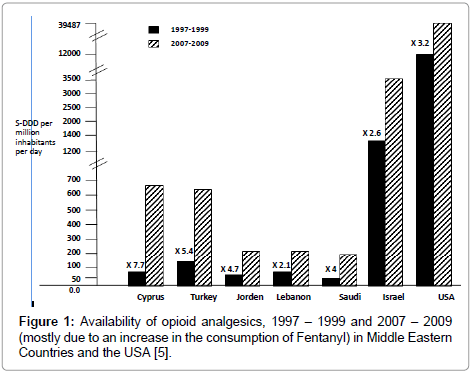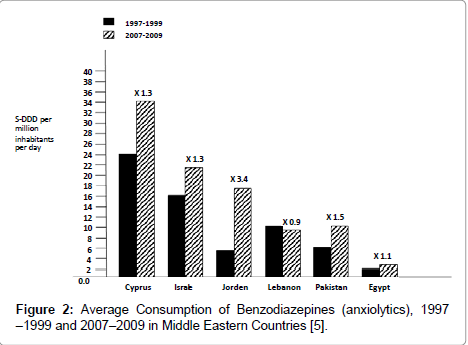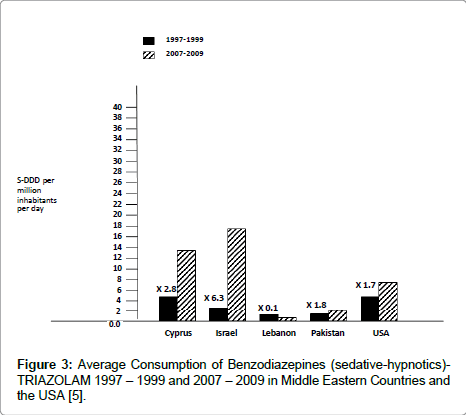Editorial Open Access
Availability of Pain Medication for Patients in the Middle East: Status of the Problem and the Role of the Middle East Cancer Consortium (MECC): Implications for other Regions
Michael Silbermann*Technion and Executive Director, Middle East Cancer Consortium, Haifa, Israel
- *Corresponding Author:
- Michael Silbermann
Technion & Executive Director
Middle East Cancer Consortium, Haifa, Israel
E-mail: cancer@mecc-research.com
Received date: July 16, 2012; Accepted date: July 17, 2012; Published date: July 20, 2012
Citation: Silbermann M (2012) Availability of Pain Medication for Patients in the Middle East: Status of the Problem and the Role of the Middle East Cancer Consortium (MECC): Implications for Other Regions. J Palliative Care Med 2:e118. doi: 10.4172/2165-7386.1000e118
Copyright: © 2012 Silbermann M. This is an open-access article distributed under the terms of the Creative Commons Attribution License, which permits unrestricted use, distribution, and reproduction in any medium, provided the original author and source are credited.
Visit for more related articles at Journal of Palliative Care & Medicine
In the Middle East the majority of cancer patients (70%) are diagnosed with advanced stage disease- LATE PRESENTATION.
For these patients, the only realistic treatment option is pain relief and palliative care, except for Israel and Turkey, in all other Middle Eastern countries there is still a lack of governmental policies recognizing palliative care. As a result in most Middle Eastern countries the consumption of opioids is either virtually negligent or very low (Table 1). By and large, Fentanyl is currently the opioid of choice whereby its consumption comprises 60-80% of all opioids consumed, whereas that of Morphine is negligible (Table 2). While comparing the most recent data with those of a decade ago, it can be noted that there is an increase in the consumption of opioid, but it is still far behind that of those of the USA (Figure 1). It is, therefore, clear that there are large disparities in the consumption levels of opioids in Middle Eastern countries, versus developed countries.
| Country | Need of Morphine Equivalents in mg per capita |
Consumption of Morphine Equivalents in mg per capita (2006) |
ACM (2006) |
|
|---|---|---|---|---|
| Egypt | 4.89 | 0.85 | 0.0076 | Virtually no consumption |
| Morocco | 3.78 | 0.47 | 0.0054 | Virtually no consumption |
| Pakistan | 5.9 | 0.07 | 0.0005 | Virtually no consumption |
| UAE | 5.44 | 2.29 | 0.018 | Virtually no consumption |
| Jordan | 7.83 | 10.39 | 0.058 | Very low consumption |
| Lebanon | 5.25 | 5.71 | 0.048 | Very low consumption |
| Oman | 5.69 | 4.1 | 0.031 | Very low consumption |
| Saudi Arabia | 5.93 | 5.65 | 0.042 | Very low consumption |
| Cyprus | 5.09 | 13.89 | 0.119 | Low consumption |
| Israel | 7.3 | 64.31 | 0.385 | Moderate consumption |
| USA | 7.43 | 420.7 | 2.478 | Adequate consumption |
Table 1: Adequacy of Opioids Consumption Measure (ACM) in Middle Eastern Countries [4].
| World Ranking | Country | Fentanyl | Hydrocodone | Morphine | Oxycodone | Total |
|---|---|---|---|---|---|---|
| 1 | USA | 25%* 9,904 | 50% 20,066 | 5% 2,060 | 15% 5,962 | 39,487 |
| 23 | Israel | 80% 2,719 | ------ | 4% 140 | 14% 500 | 3,482 |
| 47 | Cyprus | 72% 474 | ------ | 11% 72 | 81 | 666 |
| 50 | Turkey | 85% 513 | ------ | 4% 23 | ------ | 595 |
| 64 | Saudi Arabia | 67% 132 | ------ | 8% 16 | 2 | 195 |
| 66 | Jordan | 60% 111 | ------ | 23% 43 | ------ | 186 |
| 67 | Lebanon | 67% 125 | ------ | 17% 35 | ------ | 185 |
| 112 | Egypt | 41 | ------ | 4 | ------ | 49 |
| 120 | Morocco | 26 | ------ | 7 | ------ | 33 |
| 157 | Iraq | 1 | ------ | 1 | ------ | 6 |
| 159 | Pakistan | 2 | ------ | 1 | ------ | 3 |
Table 2: Average Consumption of Narcotic Drugs in Middle Eastern Countries 2007-2009(Defined daily doses of statistical purposes per million inhabitants per day) [5].
Taking these facts in consideration, I fully support Foley’s statement that the issue of cancer pain prevention ought to be addressed as an integral part of a comprehensive cancer control program [1]. Further, in this meeting Holland clearly indicated to the very close association between cancer and mental disorders such as depression and/or anxiety; and added the need to monitor the levels of distress in cancer patients [2]. Therefore, one should not disassociate physical pains from emotional distress, as both contribute to the overall suffering of the patient. And indeed, Benzodiazepines are being used in an increasing quantities; both auxiolytics as well as sedative-hypnotics, in Middle Eastern countries (Figures 2 and 3). The latter are used in larger quantities in Cyprus and Israel which have the largest population of elderly people.
In the Middle East it is not uncommon that terminal cancer patients suffering from bone metastases; don’t complain about pains but appear to internalize the fact that pains are part of the disease and accept it. In these countries non-pharmacological modalities are being used to control physical pains, but not always emotional suffering. It is; therefore, clear that the assessment of both pains as well as distress should become a routine practice by recording these 5th and 6th vital signs respectively.
Barriers to Palliative Care and Pain Management in the Middle East
1. Lack of health policies in support of palliative care. MECC is instrumental in promoting processes leading to positive decisions in Parliaments by Regulators & Policy Makers; thereafter, implemented by the Ministries of Health.
2. Lack of relevant training to health care professionals – at all levels: Undergraduate, postgraduate and during specialty training of oncologists and nurses. This barrier, however, is not unique to the Middle East.
3. Poor accessibility of essential palliative care drugs. These are at least in part; available in Tertiary Care Facilities, but not in Primary Health Care Facilities in the community, and that is what concerns us most.
Therefore, Physicians and nurses not only in hospitals, but also in the community should be trained with at least the basic principles of palliative care.
To further illustrate the above problem, let us take as an example pediatric oncology patients in various Middle Eastern countries:
1. Palestinian Pediatric Patients treated in Israel
2. Pediatric Patients in Egypt treated in the Children Cancer Hospital, Cairo
3. Pediatric patients in Iraq treated in the Children’s cancer hospital, Baghdad
4. Pediatric patients in Jordan treated in the King Hussein Cancer Center (KHCC), Amman
5. Pediatric Patients in Pakistan treated in the Children Cancer Hospital, Karachi
6. Pediatric Patients in Turkey treated in the Pediatric Oncology Services in Ankara, Istanbul and Izmir
In all these countries, pediatric cancer patients receive very good treatment in the above mentioned institutes. However, following their return to their communities, the local pediatricians or family physicians refrain from treating complications such as febrile neutropenia.
Moreover, in the region, because of multiple traditional and social reasons, most patients prefer to die at home – not in Medical Centers. Therefore, taking into account the above situation along with local cultural practices, and the fact that most countries have limited resources; we feel that home-based services should become a high priority.
Additional Barriers to Palliative Care in the Middle East
1. Education of the public, while trying to overcome the opioidphobia that still prevails in the region.
2. The Issue of the perceptions of cancer and opioids, faces us with a double taboos and stigmatization.
These barriers existed in the US 20 years ago, but are still valid in most countries in the Middle East.
To the best of our knowledge and understanding these existing taboos and stigmas are not solely culturally- related, and, therefore, should be dealt with by an ongoing process of education; since, the public, at large, still considers cancer an inherited - lethal disease. Another example of stigmatization that one experiences in the Middle East refers to the feature of late presentation:
While visiting a young female patient who was at a terminal stage of breast cancer, she was asked as to why she had waited so long prior to seeking the advice of a doctor.
Her response was: “if my neighbors would have known that I have cancer, my daughters would not have a chance to marry”.
3. Protective attitude of the patient’s family- disclosure issues. In order to promote the consumption of opioids, care givers need to improve communication with patients and families, thereby explaining the advantage of using these drugs.
Also, more proactive advocacy efforts are needed, often by Non- Governmental Organizations.
In Conclusion
We feel that the most urgent task in the Middle East is to educate and train physicians and nurses about pain assessment and management.
So, where is MECC standing with regard to this situation?
MECC is involved in promoting the consumption of pain medication through the following measures:
1. Regional didactic courses which are aimed at Hospital Staff of the following services: Oncology, Anesthesiology, Internal Medicine and Pediatrics.
MECC activities are not confined to its original member states:
• Egypt
• Jordan
• Palestine
• Israel
• Cyprus
• Turkey
But involves countries expanding from the Maghreb (North Africa) via the Mashraq (Middle East) and the Gulf States to Central Asia (Pakistan, Afghanistan).
New palliative care initiatives have been recently established in:
• Turkey
• Cyprus
• Egypt
• Palestine
• Jordan
• Sultanate of Oman
• Pakistan
The Middle East is currently undergoing unprecedented historical social turnabout; yet, these geopolitical changes do not deter professionals from seeking training and education in order to either develop new supportive care services, in hospitals and communities; or upgrade existing ones.
Such cross-border collaborations in the region take place regardless of cultural, ethnic or political differences.
In Summary
It is, therefore, our conviction, that the MECC model can serve as a case example for other regions globally.
References
- Foley K (2012) A 30 year perspective: Alleviation of pain-from research to practice. MASCC abstract No. 3, New York.
- Holland JA (2012) 30 year perspective: Progress in approaching depression and anxiety in patients with cancer. MASCC abstract No. 2, New York.
- Klastersky J (2012) A 30 year perspective: Progress in febrile meutropenia in patients with cancer. MASCC abstract No. 1, New York.
- Seya MJ, Gelders SF, Achara OU, Milani B, Scholten WK (2011) A first comparison between the consumption of and the need for opioid analgesics at country, regional and global levels. J Pain Palliat Care Pharmacother 25: 6-18.
- Report of the International Narcotics Control Board for 2010 (2011) United Nations, New York.
Relevant Topics
- Caregiver Support Programs
- End of Life Care
- End-of-Life Communication
- Ethics in Palliative
- Euthanasia
- Family Caregiver
- Geriatric Care
- Holistic Care
- Home Care
- Hospice Care
- Hospice Palliative Care
- Old Age Care
- Palliative Care
- Palliative Care and Euthanasia
- Palliative Care Drugs
- Palliative Care in Oncology
- Palliative Care Medications
- Palliative Care Nursing
- Palliative Medicare
- Palliative Neurology
- Palliative Oncology
- Palliative Psychology
- Palliative Sedation
- Palliative Surgery
- Palliative Treatment
- Pediatric Palliative Care
- Volunteer Palliative Care
Recommended Journals
- Journal of Cardiac and Pulmonary Rehabilitation
- Journal of Community & Public Health Nursing
- Journal of Community & Public Health Nursing
- Journal of Health Care and Prevention
- Journal of Health Care and Prevention
- Journal of Paediatric Medicine & Surgery
- Journal of Paediatric Medicine & Surgery
- Journal of Pain & Relief
- Palliative Care & Medicine
- Journal of Pain & Relief
- Journal of Pediatric Neurological Disorders
- Neonatal and Pediatric Medicine
- Neonatal and Pediatric Medicine
- Neuroscience and Psychiatry: Open Access
- OMICS Journal of Radiology
- The Psychiatrist: Clinical and Therapeutic Journal
Article Tools
Article Usage
- Total views: 7600
- [From(publication date):
November-2012 - Jul 12, 2025] - Breakdown by view type
- HTML page views : 2996
- PDF downloads : 4604



